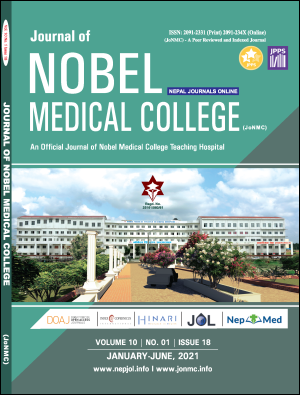Treating Facial Cuts to a Near Scar Less Outcome in Children
DOI:
https://doi.org/10.3126/jonmc.v10i1.37980Keywords:
Face, Lacerations, Tissue Adhesives, ScarAbstract
Background: Facial Lacerations constitute an important reason for children (< 18 years) to visit emergency room. While bleeding and pain are the associated acute problems, the long term outcome in terms of a cosmetically acceptable scar is a matter of significant parental concern. The aim of the research is to study the profile of facial lacerations in children and to assess the outcome of repair.
Materials and Methods: A retrospective review of children who underwent facial laceration repair between January 2018 and December 2020 was done. The deep ones underwent sutured repair in layers reinforced withtissue adhesive in operation room under intra-venous anesthesia and superficial ones in emergency room with only tissue adhesive following usual wound treatment protocol. Demographics, surgical details and outcomes were studied. All the repaired cuts were followed up at 1 year retrospectively and the cosmetic outcome was evaluated using modified stony brooke scoring system.
Results: A total of 40 patients (24 males, 16 females) underwent facial laceration repair at a mean age of 4.7 years (range 1-13 years). Seventeen were deep and 23 were superficial cuts. Only1child in the superficial group with gross wound contamination at presentation developed wound infection. No dissatisfaction was reported in the deep group while parents of 4 children in the superficial group reported dissatisfaction with the final scar.
Conclusion: While surface cuts can be treated with irrigations and tissue adhesive in the emergency room, the deeper cuts require layered repair aided by tissue adhesive for optimum scar outcome.
Downloads
Downloads
Published
How to Cite
Issue
Section
License
JoNMC applies the Creative Commons Attribution (CC BY) license to works we publish. Under this license, authors retain ownership of the copyright for their content, but they allow anyone to download, reuse, reprint, modify, distribute and/or copy the content as long as the original authors and source are cited.




